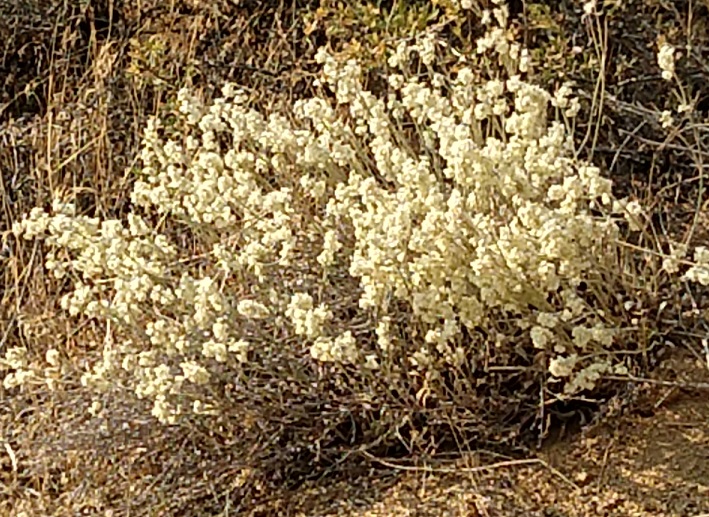



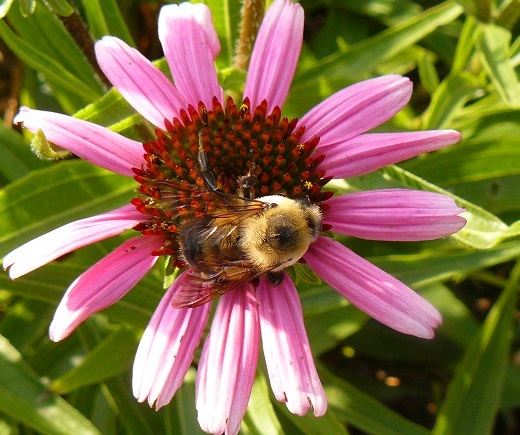
The longer that I work with plants, the more I learn to love and appreciate insects of all kinds. This time of year, insect activity is one of the best things about the garden. The story of insects is a story of connections: plants feed insects, insects pollinate plants, insects become food for birds, bats, fish, frogs and more.
Watching these beautiful and industrious bees, it is easy to forget that the big picture for insects is truly grim. Dave Goulson, entomologist and author of two entertaining books about bees (A Sting in the Tale and A Buzz in the Meadow) recently wrote about what he calls the looming “Insect Apocalypse”. Researchers are seeing a decline in the overall abundance of insects worldwide on the order of 75% over the past 50 years. The data is alarming, depressing and numbing, but we can all do something.
Goulson asks us to “Imagine green cities filled with trees, vegetable gardens, ponds and wild flowers squeezed into every available space – in our gardens, city parks, allotments, cemeteries, on road verges, railway cuttings and roundabouts – and all free from pesticides.”
It’s a vision well worth working on.
Note: The nursery will be open for fall planting starting Wednesday, September 1. Hours are: Wednesday-Friday 12-5; Saturday 10-5. Loads of plants will be available!
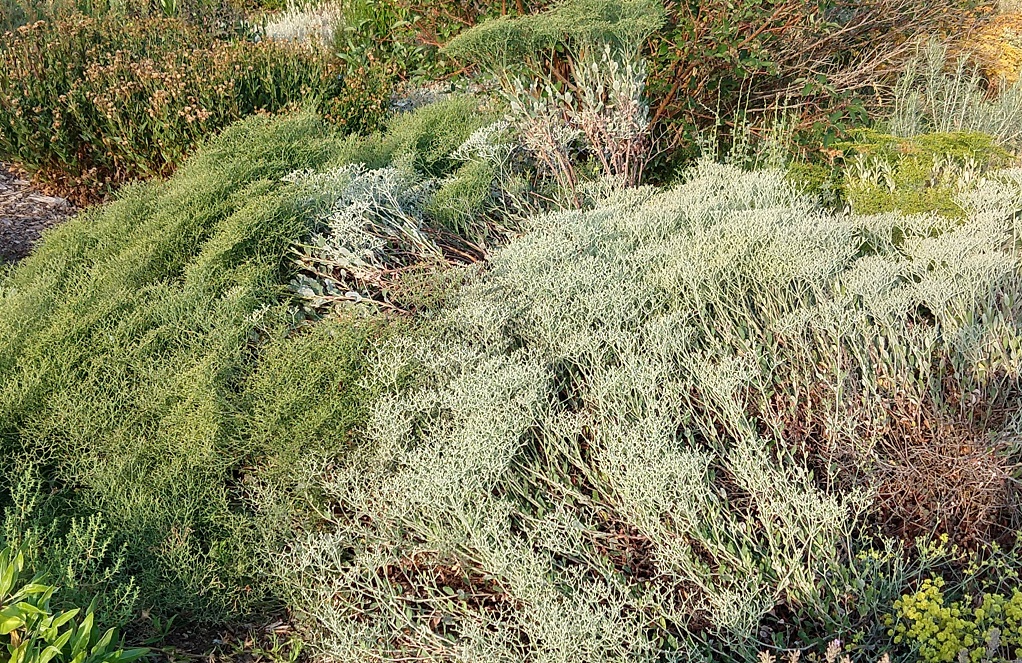
The two plants shown above are versions of Lacy Buckwheat (Eriogonum corymbosum), a beautiful, large Utah native. Both will cover themselves with small white flowers in the fall, but one will bloom earlier than the other. These two plants offer a great example of something I see all the time: genetic variability in native plants. Unlike highly cultivated species—which tend to be quite uniform –native plants can be highly variable in appearance, even differing in leaf color as in our two examples. This genetic variability allows native plants to adapt and survive the challenges that Mother Nature throws at them year after year.
And for me, it is also one of the challenges and joys of gardening with natives.
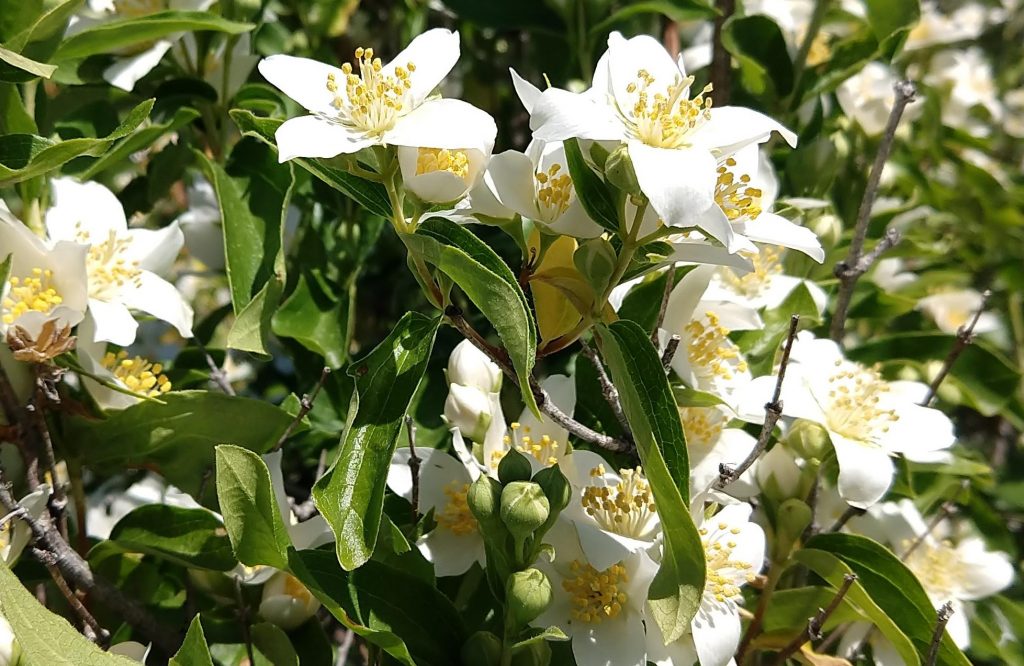

Buckwheat season has begun! As many of you know, I am a huge fan of Buckwheats, a large genus (Eriogonum) of annual and perennial flowering plants native to N. America, mainly the arid Western US. This early blooming buckwheat is Eriogonum heracloides, called variously Creamy, Wyeth, Whorled or Parsnipflower Buckwheat. I use ‘Whorled Buckwheat’, as the whorl of leaves halfway up the flowering stalk is a good identifier.
Whorled Buckwheat lives in the Boise Foothills, along with Sulfur Buckwheat. You can see its cheery bloom in a few weeks as you drive up Bogus Basin Road.
The blooming of Whorled Buckwheat is a sure sign that we are settling into the truly warm weather of spring—and it might be a good time to plant your tomatoes!
*Erion is Greek for woolly and gonum means knees, so you can call these plants the “Woolly Knees”!
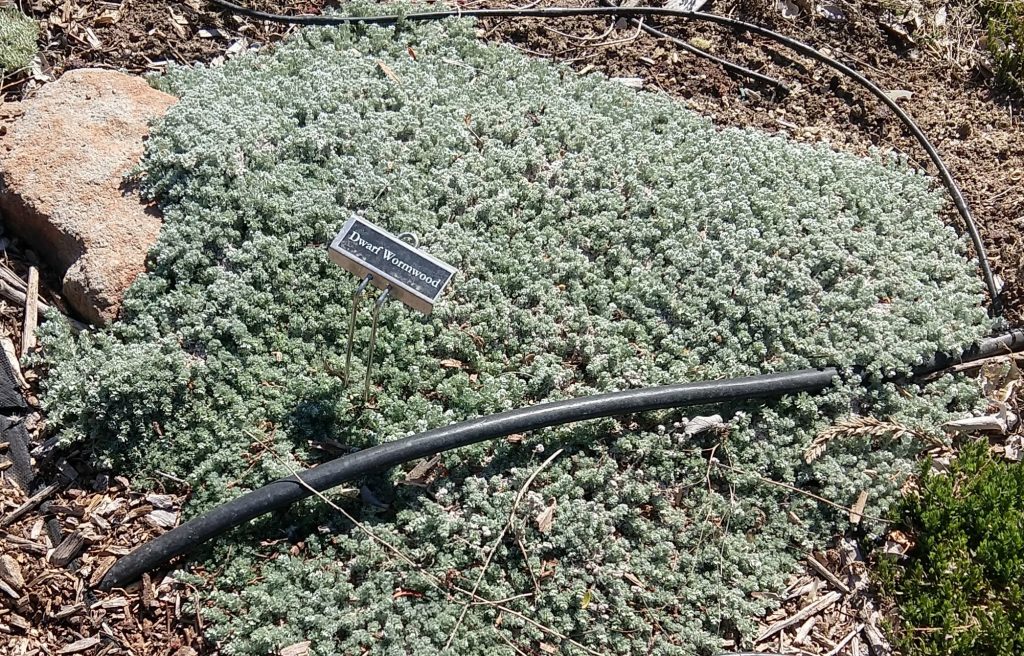
The charming groundcover above, “Dwarf Wormwood”, is a part of the large genus Artemisa. With hundreds of species worldwide, Artemisias are called, variably, Wormwood, Mugwort or Sagebrush.
In Europe, the genus was named after a famous Greek queen and healer, Artemisia of Halicarnassus, as well as the Greek goddess Artemis. Artemisia was used traditionally in the medicines of Europe and Asia and has recently been tested for use in the fight against Covid. Artemisias have also played a role in flavoring food (Tarragon) and drink (Absinthe).
Upon colonizing the American West, Europeans were reminded of another Old World medicinal herb, Sage (Salvia), and gave the widespread local Artemisa its confusing name ‘Sagebrush’. They viewed the Sagebrush ‘ocean’ as endless and saw little utility in it.
We are are coming late to the appreciation of Sagebrush as the anchor of our high desert landscape and the key species for the preservation of much desert life, including the endangered Sage Grouse.
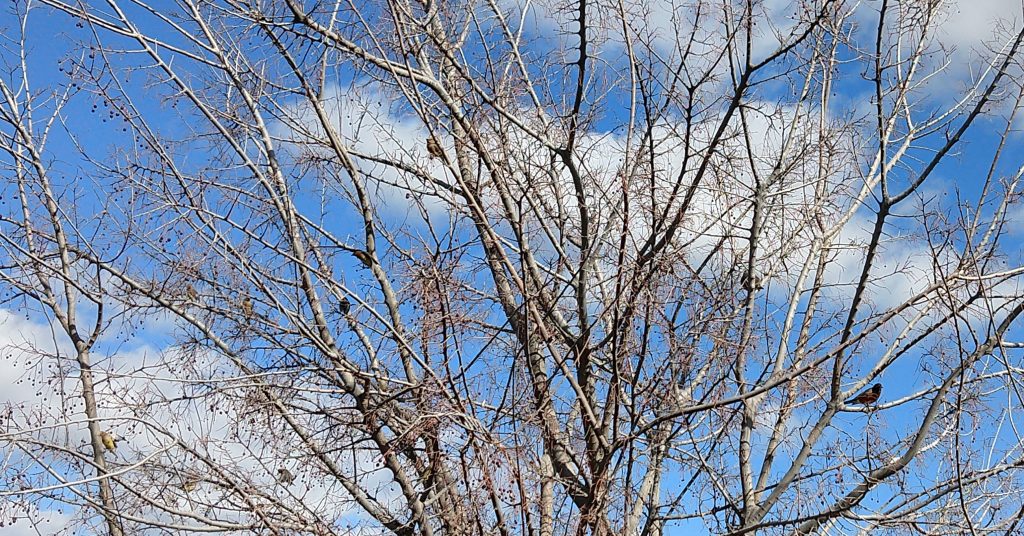
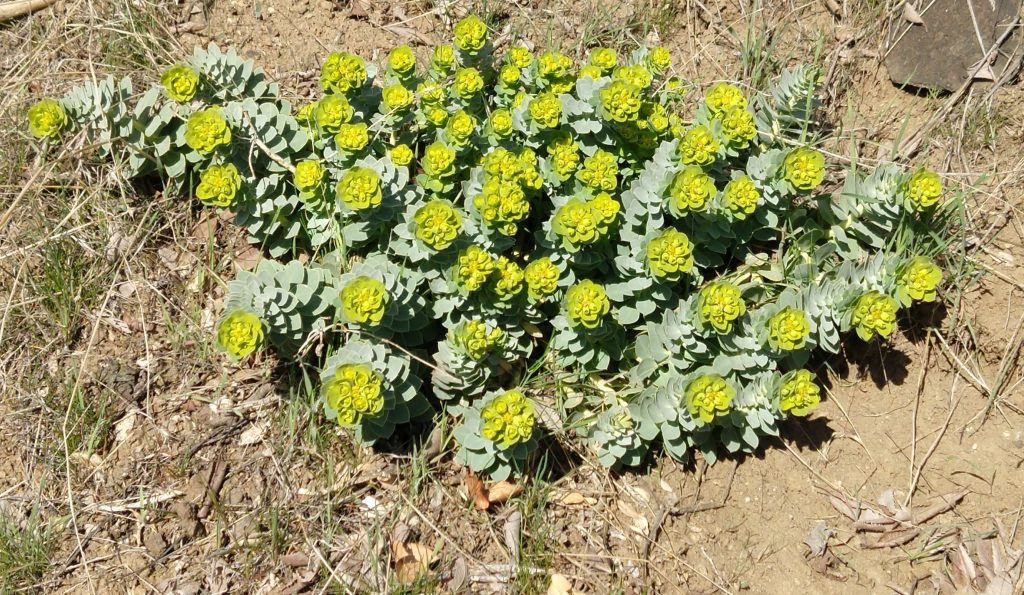
I took this photo yesterday of Myrtle Spurge, aka Donkey Tail Spurge (Euphorbia myrsinites), spreading aggressively in the Boise Foothills. This attractive attractive pest was once considered a great choice for xeric landscaping, but its drought-tolerance and ease of propagation has allowed it to jump into the wild. A native of Eurasia, it can easily overwhelm native competitors and is now listed as a noxious weed in Colorado, Oregon and some Utah counties. It is probably too late to prevent it from taking over large areas of our Foothills, but we should still avoid it in our landscapes. Always wear gloves when yanking it out–the stems contain a nasty, milky sap.

Years ago, when the kids were small, we started replacing the traditional Christmas tree with a sagebrush. Going out into the desert to cut one was a family adventure and the result was always somehow miraculous. The trees looked windswept and architectural, beautiful in the way that asymmetrical Japanese-style flower arranging is beautiful.
These days when I am out hiking I am often struck by the unpredictable and graceful forms of many sagebrush. While sagebrush is not a good fit for many landscape projects, I think it is too often overlooked as design feature, especially in native and xeric projects. Next time you look at sagebrush in the wild, see if you find the structural beauty in its gnarly, off-kilter form.
Years ago, when the kids were small, we started replacing the traditional Christmas tree with a sagebrush. Going out into the desert to cut one was a family adventure and the result was always somehow miraculous. The trees looked windswept and architectural, beautiful in the way that asymmetrical Japanese-style flower arranging is beautiful.
These days when I am out hiking I am often struck by the unpredictable and graceful forms of many sagebrush. While sagebrush is not a good fit for many landscape projects, I think it is too often overlooked as design feature, especially in native and xeric projects. Next time you look at sagebrush in the wild, see if you find the structural beauty in its gnarly, off-kilter form.
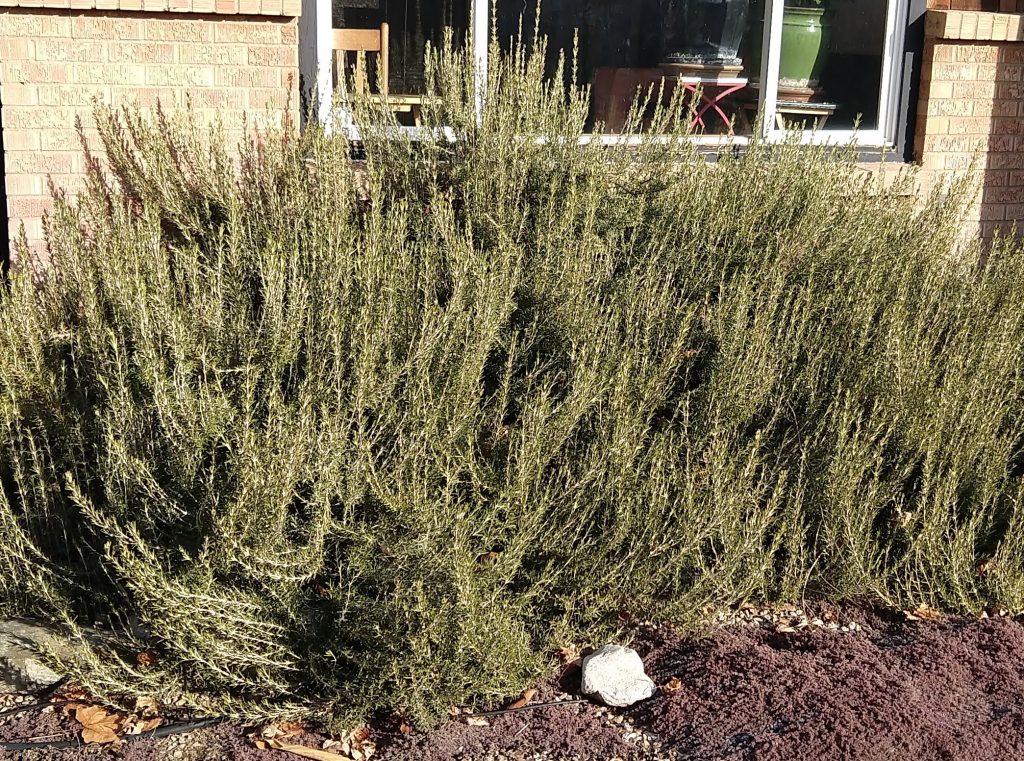
Rosemary is one of my favorite water-thrifty landscape plants. It is beautiful, especially in winter, and feeds honeybees in summer. The hitch is that Rosemary, even the most cold-hardy varieties (e.g. ‘Arp’) are only marginally hardy here in Boise. The solution: find (if you can) the right micro-climate like this one–a warm, sunny, south-facing brick wall. The brick is not absolutely necessary, but it helps.
P.S. Note the purple carpet in front. That is Woolly Thyme in winter, a nice contrast.
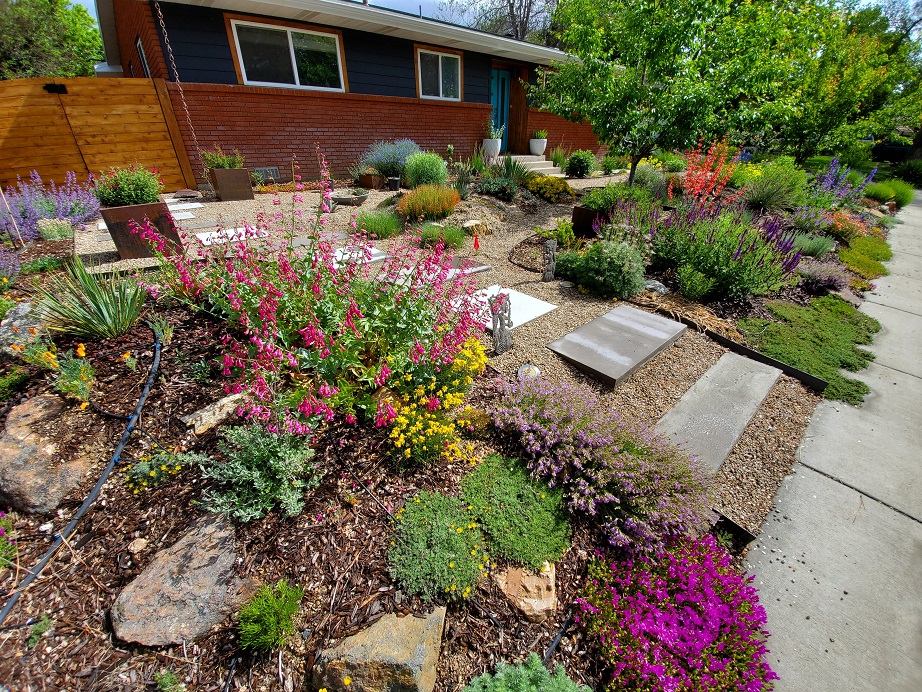

Here is a truly inspiring landscape created by customers Pascale and Matt at their home on the bench. They describe their soil as alkaline clay. They write: “We’ve found some plants do fine in the clay- lavender, artemisia, most ornamental grasses, ice plants, echinacea, Jupiter’s beard and catmint. For the more drainage-sensitive plants we had soil brought in and built small berms. We used a sandy loam mixed with lava fines. It was really tough to keep up with the watering the first summer until we got the drip irrigation installed, now it’s a pretty low-maintenance yard.”
Low maintenance and stunning!